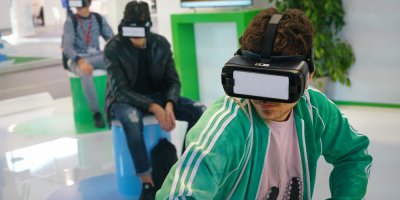
Data could help us craft the post-pandemic workplace. Source: Shutterstock
How data will help create the ‘new normal’ workplace
- Can data-driven insights help to reimagine the modern workplace, taking into account the post-pandemic ‘new normal’ for work?
With nations around the world recovering from the initial wave of the COVID-19 pandemic, businesses are gradually opening up and a return to the workplace is imminent, if not already underway in many countries.
As organizations prepare to transition back to the physical work space, there has been an unprecedented spotlight on how safe it is, as well as a focus on safeguarding the employee’s wellbeing by providing a protected working environment.
Here in Asia, emphasis on wearing face masks, keeping a one-meter distance between each other in social spaces, and regularly washing and sanitizing hands has become part of the routine in transitioning back to physical locations. But businesses need to respond quickly to set up these measures, as well as reengineering their existing space to minimize contact, reexamine office priorities, and deciding if all staff need to be housed in the same offices.
Such concerns– along with a renewed cybersecurity threat landscape – are quickly becoming accepted practices in the ‘new normal’ workplace, and it is influencing how the company approaches its operations. For instance, 93% of businesses say they have changed their IT priorities because of COVID-19, according to a new GlobalData research paper commissioned by Telstra.
“Essentially, it showed that businesses are recalibrating their digital transformation strategy,” said Dustin Kehoe, APAC head of research at GlobalData, who authored the paper entitled Business Continuity, Flexible Working and Adaptive Infrastructure: Five Actions for When the Economy Reopens Following COVID-19.
In addition, staff will be subject to an increasingly agile workplace, with remote working an acceptable alternative for many who tested it out successfully during lockdown procedures. With a more distributed workforce comes new challenges such as rethinking how to use office space more efficiently, and is one of the areas that a data-driven approach can inform decision-making.
Large organizations such as Standard Chartered Bank might hire someone like Ricardo Chacon, who will analyze reams of data gathered from sensors to better understand a work space’s occupancy patterns, and to identify best practices to better utilize the work space.
“The occupancy sensors and descriptive analytics that, so far, have been used to understand the patterns of occupancy, will now have to leap to more sophisticated and less complicated solutions, minimizing operational disruption in their deployment and maintenance,” writes Chacon, who is the workplace strategy manager, ASEAN, for Standard Chartered Bank.
“Besides all the operational issues caused by the existing clunky and expensive array of sensors and cables, the data collected has so far been limited to descriptive findings, failing to take the next steps into predictive and prescriptive analytics and missing the opportunity to truly influence the workspace design with more objective data.”
Artificial intelligence (AI) is the most likely next-generation technology that could contribute predictive analysis to understand data insights, and could be harnessed to comb through mountains of data, and an MIT research paper says AI can “generate a sea of data through their interactions on email, Slack, text and instant messaging platforms, videoconferences, and the still-not-extinct phone call. With the help of AI, this data can be translated into automated, real-time diagnostics that gauge people’s health and well-being, their current risk levels, and their likelihood of future risk.”
Of course, in order to effectively track and gather that much data, employees will pretty much be monitored around the clock – providing surveillance footage that can be converted into data points for analysis, on top of the other personal data that people are already sharing on an alarmingly frequent basis.
Nevertheless, the power of AI in tandem with machine learning and natural language processing (NLP) could be very effective tools to better understand real-world data and trends, especially if the volume of data is significant. And while better grasping this data could help with risk identification and assessment in a more health-conscious workplace, its usage would have to be clearly defined to prevent it from tipping over into privacy invasion.
READ MORE
- Strategies for Democratizing GenAI
- The criticality of endpoint management in cybersecurity and operations
- Ethical AI: The renewed importance of safeguarding data and customer privacy in Generative AI applications
- How Japan balances AI-driven opportunities with cybersecurity needs
- Deploying SASE: Benchmarking your approach


